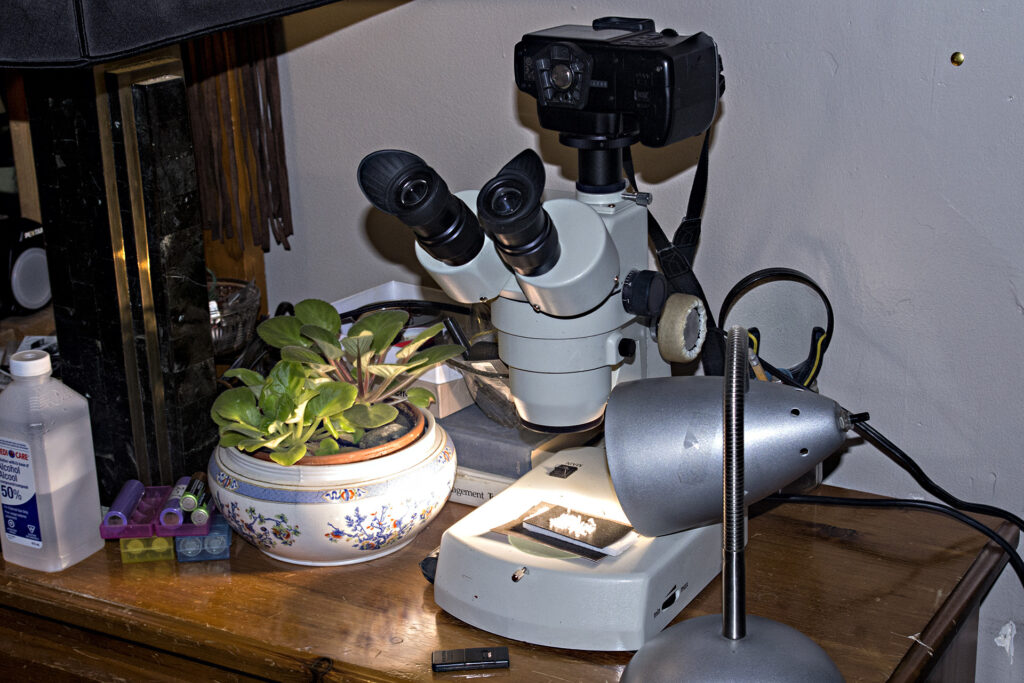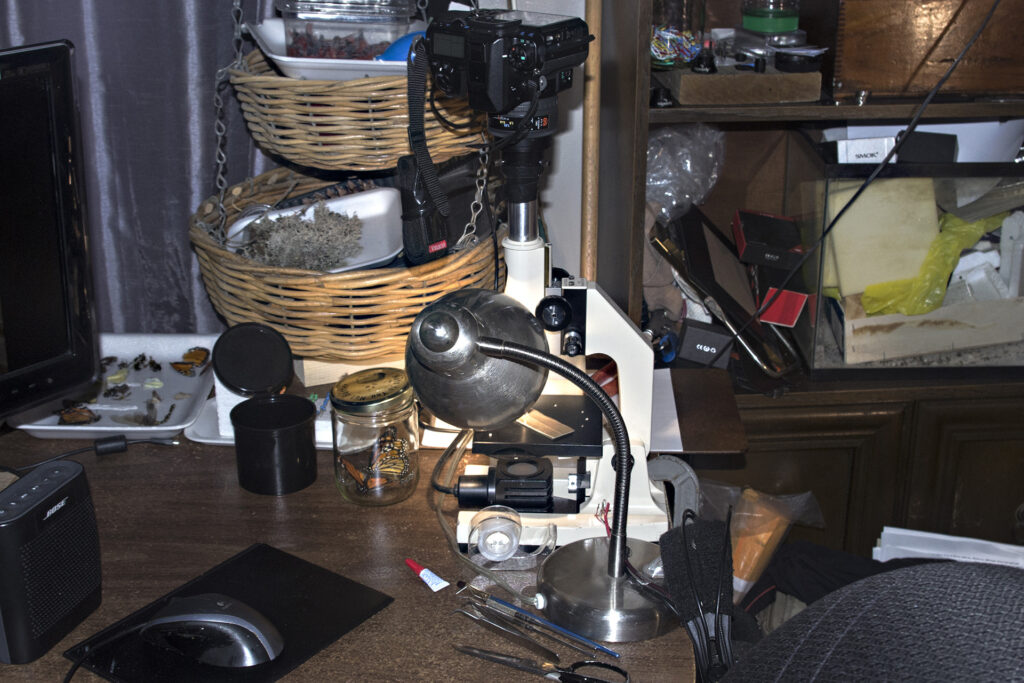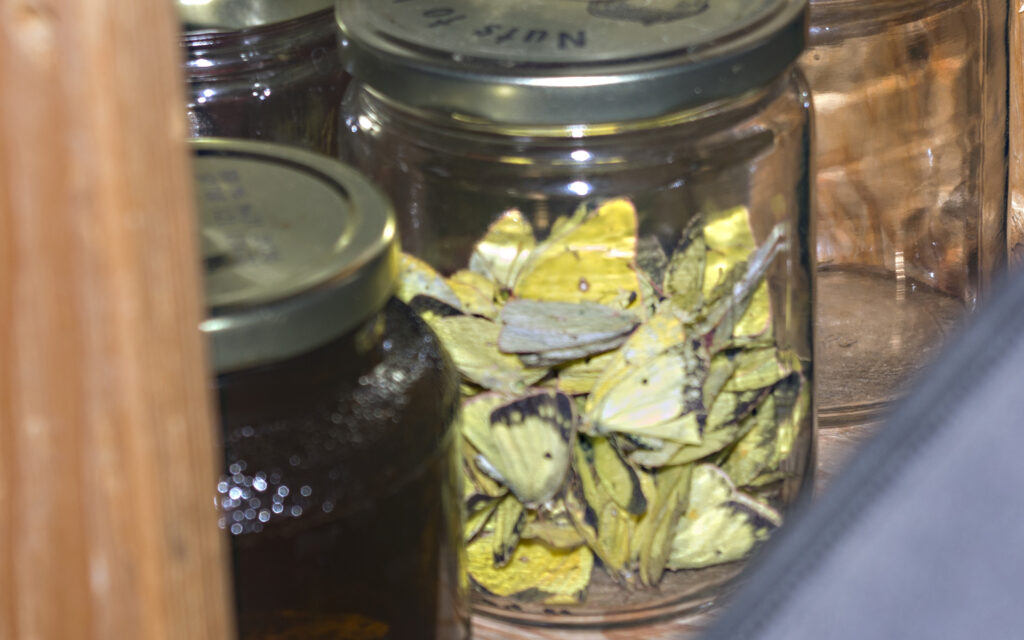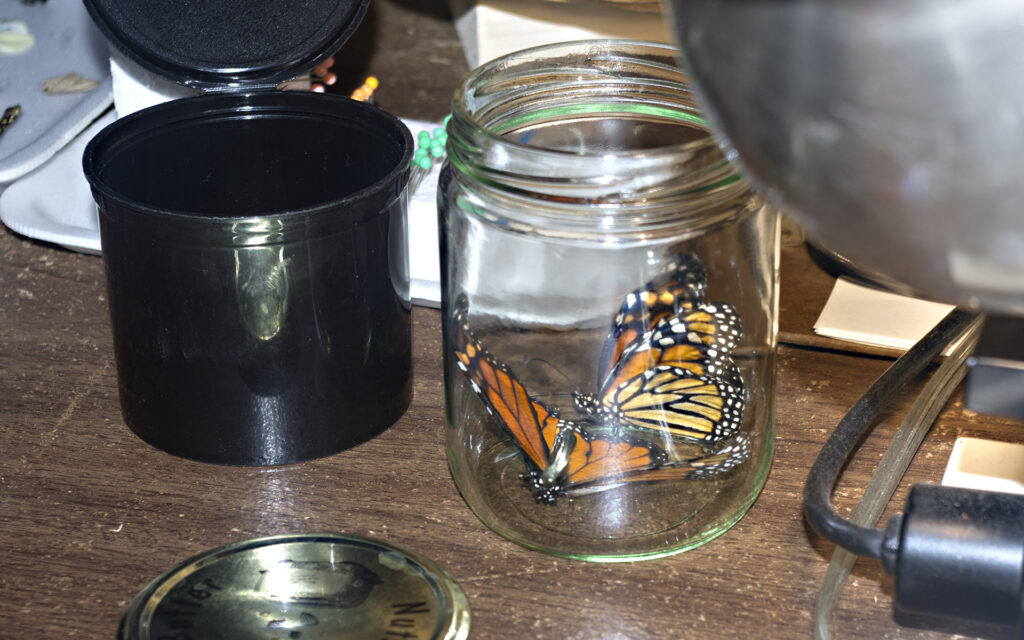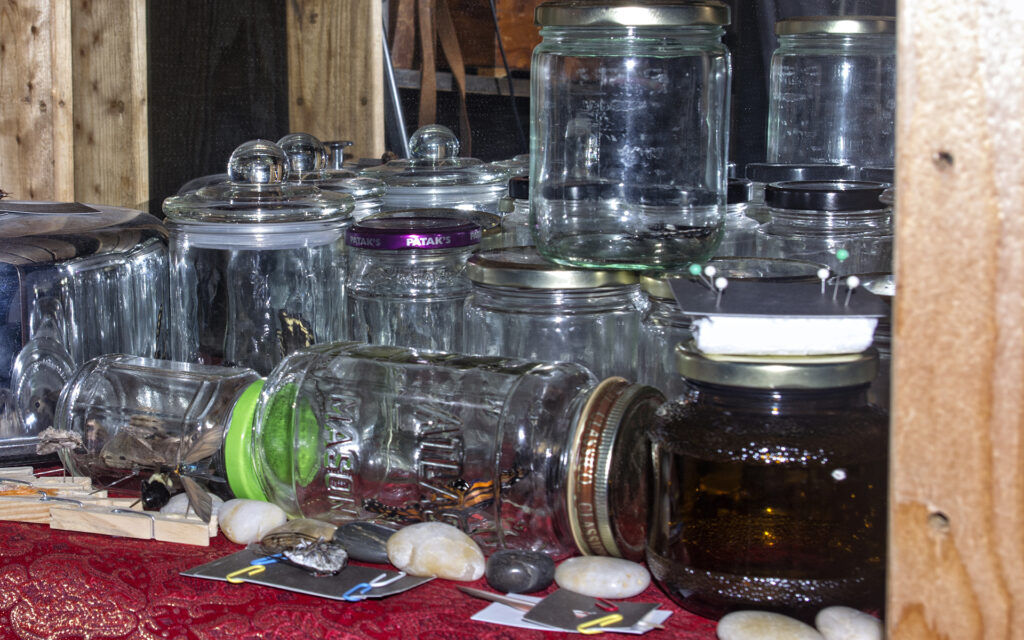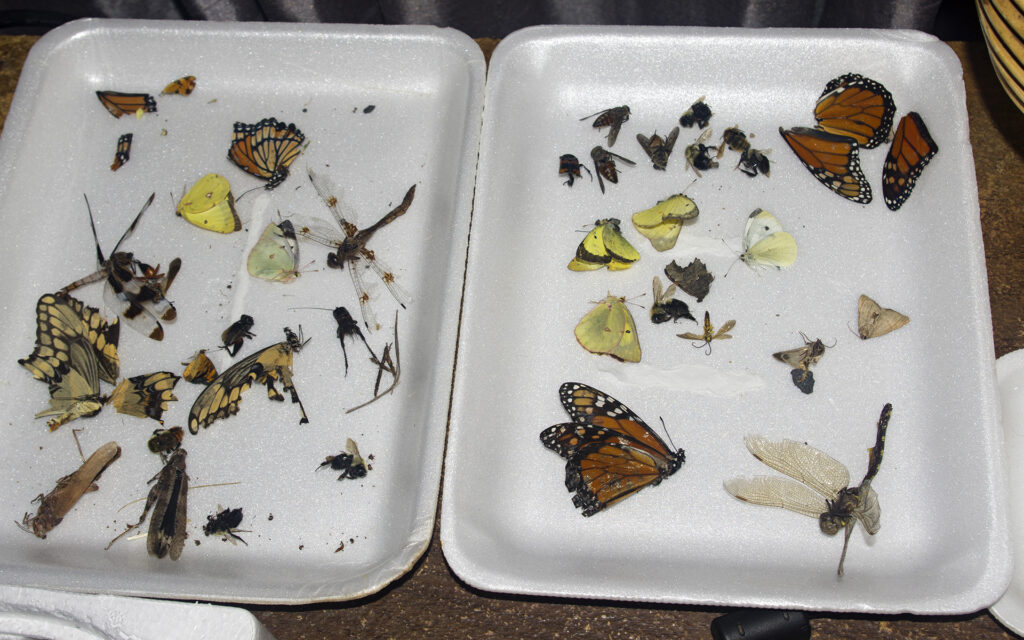This page is more intended as an explanation for visitors who may not be familiar with the term focus stacking, than a tutorial for people who wish to pursue it themselves, but I hope to include some useful information, too. I’ve only been using this technique for two years, so I still have plenty to learn, myself.
Focus stacking itself is the process of taking many pictures of a subject at slightly different focuses and then merging the sharp parts of the pictures together into a single composite image that appears to be sharp throughout the range of the stack. The first and last exposures in a stack define the boundary, so if the farthest part of your subject is in focus when you begin, and you continue shooting and incrementing the focus until the nearest portion of your subject has been in sharp focus, and then you’ve gone a bit beyond that for good measure, your whole subject will be sharp. There are a few applications to help with this process, and they help a great deal. Each has slightly different features and options. Helicon, Zerene and Picolay are all stacking applications. The finished composite, after any desired retouching is done within the stacking application can then be edited similarly to any other photo.
Left: My Boreal trinocular microscope, which is 10X-40X in normal usage. Right: My Swift compound microscope. It’s nothing fancy at all; an old high school unit. It serves me well.
The purpose of all of this is to increase the depth of field of our photos. It’s a laborious process to stack manually, but I enjoy it. I’ve happily clicked away for thousands of hours over the past two years, running my first camera body into the ground in the process, and nearly wearing out another. It’s addictive in an honest and creative way, and it has other benefits, too. To give some idea, the lower magnification stacks on this site, those which I made with my trinocular microscope only contain dozens of exposures in each. With my compound microscope I’m shooting at either 40X or 100X, and so the depth of field is razor thin. Anybody who has used a microscope understands this limitation of them because it affects what we see through the eyepiece, too. What this means is I need to use many more exposures. Last year I shot approximately 220 stacks, and the average depth of them was between 400 and 900 exposures each. However, some subjects are quite tall, and I’ve occasionally exceeded 1500 exposures in a stack. It takes a couple of hours to shoot. Flatter subjects like pressed leaves, feathers, or insect wings arranged perpendicular to the objective lens require far fewer exposures, and some of those stacks are only around 200 or so exposures deep. It varies widely, depending mainly on the physical height of your subject and the precision with which you can make focusing adjustments. I think I’ve probably pushed it about as far as I can, but if I find an appropriate subject I may push on for a 2000 exposure stack, in part to see how the stacking applications handle it.
A quick note about sourcing butterflies. For me to get to decent places to hike I frequently have to hike along highways and main roads, first, and I’ve found that we slaughter so many butterflies with our vehicles this is a great way to source “ethical” specimens. I mean at least I didn’t kill them, even if my species did. My relationship with my species is tenuous. Below you can see my haul of sulfur butterflies from a few walks, as an example. I collected about a dozen monarchs, too, and I’d suggest anybody with interest keep any they find, because they won’t be with us much longer. I waste very little. The trays in the last picture below are the dregs from an evening walk, the whole specimens already having been sorted. These fragments often yield interesting parasitic critters, or other surprises.
The actual shooting process is very straightforward. I hold the shutter remote in my left hand, and use my dominant right hand to work the focusing wheel on the microscope. Left, right, left, right. It takes muscle memory to become both fast and precise, and I saw myself improve over the past couple of years, which felt good. I imagine I’ll have to work for it again this season as I took a break over the winter, but that’s OK.
I don’t use Live View on my camera for more than composing the shot. When I’ve got the subject arranged how I want and I’ve lowered the focus to the farthest part of the subject I want to capture (farthest from the camera), I turn off Live View and rely on a 1 second review of my shots to tell me when I’ve reached the end of the stack, and to give me indications that everything is OK, the subject hasn’t inexplicably moved, or stuff like that. I shoot in manual mode, usually just by a pair of LED floods, because I haven’t been able to afford a flash that can keep up with me. What I need is a flash unit with an AC adapter. Once I do a couple of test shots and adjust my exposure or white balance if needed, I start shooting the stack and I let my mind wander to the stuff that interests me. I watch the focusing wheel rather than the camera because this dramatically improves improving muscle memory. Usually I can maintain a rate of shooting that exceeds my camera buffer, so I shoot in bursts where I aim to fill the buffer at the same time I need to readjust my hand on the focusing wheel. Sometimes it works, sometimes not, and it doesn’t matter.
The important thing I’ve found in enjoying the process is just finding a sense of flow, and to focus on thinking about something completely unrelated because the creativity of the process is fungible. This is when I think about stuff I have difficulty thinking about when I have my full attention, which may sound weird, but it works. I look at this stuff as a tool of philosophy for me, both with my foraging for and selection of subjects, and the process of shooting and editing. Less so with the editing. Post processing can be fun, but it lacks the rhythmic flow of shooting the stacks. Normally my rate of shooting keeps the 1 second review image suppressed, and when I pause to readjust my hand or to wait for the buffer to flush I glance at how it’s coming along. I try to overshoot a little because sometimes the small LCD on my camera makes it difficult to judge where the leading edge of a subject really ends, and it’s much easier to pare off a set of exposures in the stacker than it is to deal with a stack that has fine foreground details out of focus.
I don’t think I’ll discuss how to actually run the stackers here, or how to post process. It’s beyond the scope of my intent, which is to describe my process of creating the kind of photos I make. I think I’ve accomplished that.

